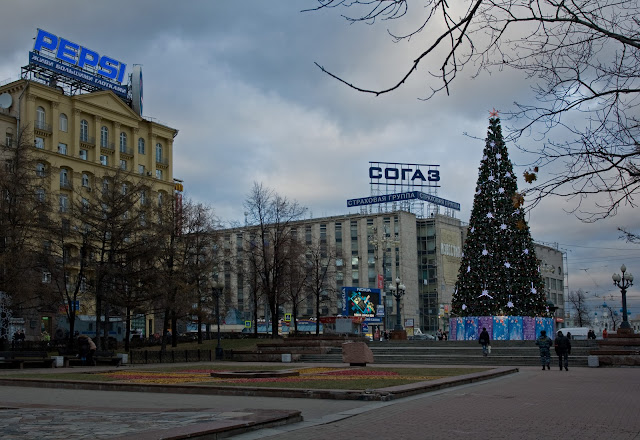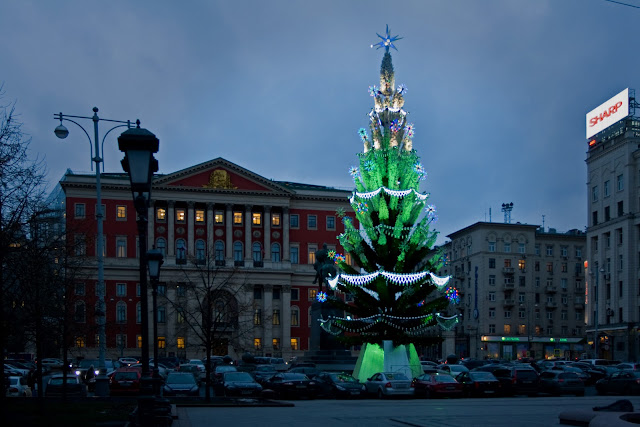I had been warned that Moscow weather in November is bleak and depressing, but I haven’t found it so. Still, I suppose if I had spent my whole life passing through cold, damp Novembers, instead of sunny Australian ones, I might have a different view of things.
Over my first two weeks it has generally been overcast, sometimes raining or light snow, with an occasional more or less sunny day. Not that the daylight lasts long – it doesn’t get light until about 9.30am and is dark again by six. The sun is low in the sky.
I have been told that Moscow has been placed in a permanent state of daylight saving. Tough in the morning, when everyone arrives at work while it is still night. It doesn't become light until about 9.30am. But I think having a little extra daylight at the end of the working day compensates. At least most people aren’t also coming home in the dark.
The temperature has been hovering around zero degrees, so the occasional snowfall has been quickly melting. The streets are damp and can be little hazardous with ice. But it is still possible to go for long walks – rugged up with a scarf and gloves it can be quite enjoyable.
I have also been pleasantly surprised – delighted - at finding so much open space for walking in Moscow.
This morning I took the Metro to Sparrow Hills (Vorobyovy Gory). I decided to get off at University station, only 7 stops from Red Square. One of the seven Stalin Skyscrapers is located at the university, which I wanted to see (I’ll write about those buildings in a later post). From there, it is only a couple of kilometres to the reserve at Sparrow Hills.
 |
| View from the top of Sparrow Hills |
I wasn’t entirely sure what to expect. I could find little information in the Moscow guide books, nor on the internet. Located some 6 kilometres south west of Red Square, the hills are located on a steep embankment along a bend in the Moscow River, rising quite steeply to an elevation of perhaps 50 metres. The park is a crescent shape, following the bend of the river, maybe 3 kilometres long and 500 metres deep. Behind the Sparrow Hills the elevated terrain continues towards the university and the suburbs beyond.
 |
| Near frozen pond, picnic facilities and track |
For the most part it is forested, with pleasant, well-maintained walking tracks. There are cycle paths (though I have no idea how anyone is supposed to get a bicycle to the reserve through the dreadful Moscow traffic) and gazebo-like picnic shelters. Surprisingly there is also a ski lift, together with an enormous ski jump which would provide an excellent launch ramp into the river.
 |
| Sparrow Hills chair lifts |
 |
| The ski jump of death |
I spent a delightful couple of hours wandering the reserve. Very few people about, not unexpected on a chilly Wednesday in November. I expect the place is packed on a summer weekend. A metro station (called 'Sparrow Hills', but in Russian, of course) occupies the lower tier of an interesting 2 tiered bridge (the upper tier being for cars) at the eastern end of the reserve.
 |
| Sparrow Hills extends along the left shore into the distance | | | | |
|
 |
| Looking in the other direction. The two tiered bridge in the distance holds the Metro on the lower lever and cars on the upper. |
And yes, there are sparrows, quite tubby ones larded up for the winter. But that's not how the reserve got its name. According to Wikipedia, the hills are named after a village (Vorobyovo) acquired by a Grand Duchess in 1451 from a priest named (you guessed it!) - Vorobey (Sparrow).
Follow this link for the location of Sparrow Hills on Google Maps











































